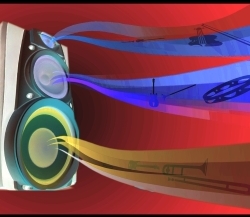“I’m not happy with my mixes.”
That should become the anthem of home studio owners everywhere. (I’m thinking it would sound a lot like AC/DC’s “TNT.” Something like, “My MIX – ES SUCK … They really do.”)
Anyway…it’s a real struggle. As with anything creative (and anything worth doing), mixing takes a mountain of effort to get really good at it. And it’s not like you work hard for four years and get to graduate with a bachelor’s in mixing. You will always be capable of churning out a bad mix. The difference is those bad mixes will be fewer and fewer, and when you do crank out a steamy pile of audio poo, you’ll more than likely be able to recognize it and fix it.
All that said, take heart. Mixing is a game where you can absolutely improve your mixes over time, but you have to avoid some roadblocks. I’ve compiled them into a list of 10 Reasons You’re Not Happy With Your Mixes. I’ll share the first 5 today, and I’ll share the last 5 next week. Let’s dive in:
10. You’ve Forgotten What A Good Mix Sounds Like.
A funny thing happens when you set up a home studio. You put some equipment in a room and do your best to makes sure it sounds as good as possible. Then you get to work recording and mixing.
You mix and mix and mix, but there’s a problem. You’ve got these nice-sounding speakers that are supposed to be accurate and good for mixing, but the only thing you ever listen to is your own mixes.
See the problem?
You’re trying to make your mixes sound like professional mixes, but you rarely actually listen to professional mixes on your system. That means you don’t know what a good mix is supposed to sound like in your room. You’re playing a constant guessing game.
This is one of the most common questions people ask me. “My mixes sound great in my studio, but they sound like garbage everywhere else.”
I always encourage them to go listen…really listen…to their favorite album in their studio. Chances are it will sound VERY different from their mixes. That should be a red flag. If you find yourself in a position where you think your mixes are the only ones that sound good in your studio, and that all these professional, Grammy-award-winning mixes don’t sound nearly as good as yours, you’ve been duped.
The solution isn’t to go buy more acoustic treatment or get better monitors. You simply need to familiarize yourself with what a good mix sounds like in your system. Once you do, you’ll be able to recognize when your mix doesn’t sound good, and you can start working to get it there.
I’ve used this analogy before: I heard once that in the world of counterfeit money, the people who are experts at spotting a counterfeit bill spend all their time studying the real thing. They know every square inch of the 100-dollar-bill, so much so that they can spot a fake almost instantly.
Whether that’s true or not I don’t know, but it proves my point. If you become intimately familiar with what a good mix sounds like, both out in the real world and in your studio, you’ll be in a better position to make your own mixes sound good.
9. You Put Plugins On Every Single Track.
This seems inevitable for people starting out. They see some pretty videos of people using lots of fancy plugins, and they assume they need to do the same thing. They slap a plugin (or six) on every single track in the session. You know it’s bad when you’ve spent 20 minutes trying to get the attack time right on the compressor on your shaker track.
This is problematic for so many reasons, but the biggest one is it’s a huge waste of time. Imagine you put just two plugins on every track, and you have to spend time tweaking settings on all of them. If you’ve got a fairly big session (I did one the other day that had around 72 tracks), that’s 144 plugins you’ve got to tweak. Let’s say you’re new to mixing, and it takes you two minutes per plugin to get the settings right. That’s almost FIVE HOURS of time spent tweaking.
I don’t care how long it takes you to mix a song, but tacking on a mandatory five hours to the front of your mix is a surefire way to burn yourself out and waste a TON of time.
Yes, sometimes I use 5 or 6 plugins on a track, but that’s only because each of those plugins is doing a specific task. Hear me clearly on this: Every track doesn’t need a plugin. If you’re unsure of whether a track needs a plugin, err on the side of simplicity. I promise you it’ll pay off. You’ll have better mixes in less time.
8. You Spend A Lot Of Time In Solo.
The solo button is a useful tool…on occasion. It allows you to listen to one track by itself, muting everything else in the session. Lovely, right?
The problem is that some people use the solo button as their favorite mixing tool.
Their mixing process looks something like this:
—Solo kick drum.
—EQ and compress kick drum.
—Solo snare drum.
—EQ and compress snare drum.
—Solo high hat.
—EQ and compress high hat.
They do this until ALL the tracks have been solo’d and made to sound perfect. The first problem with this is that it pushes you in the direction of #9 above, using plugins on every track. But it also gives you a VERY wrong idea of what makes a good mix.





















